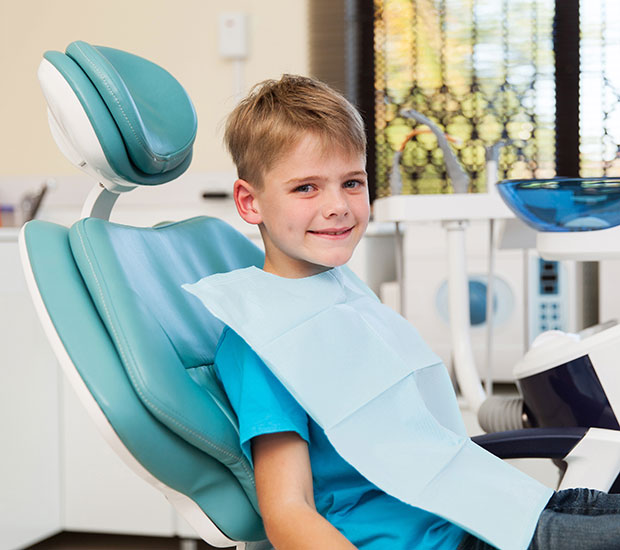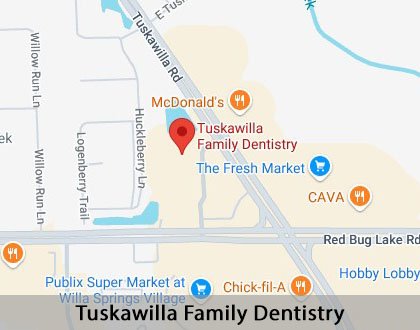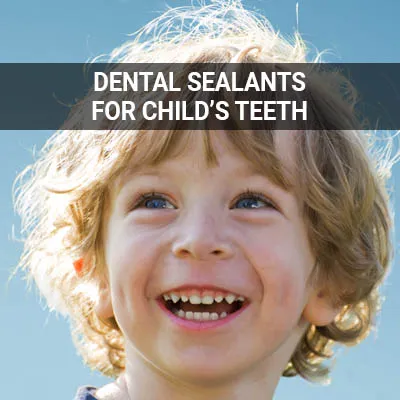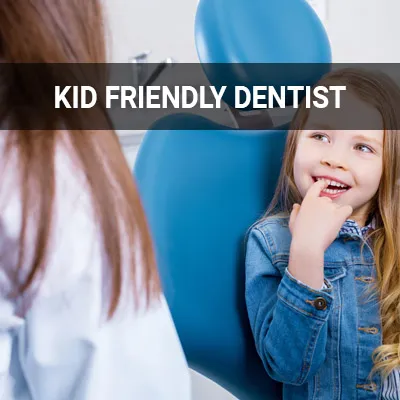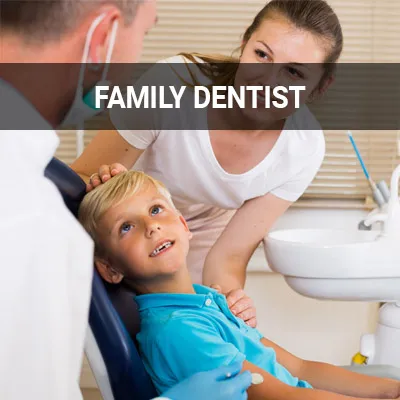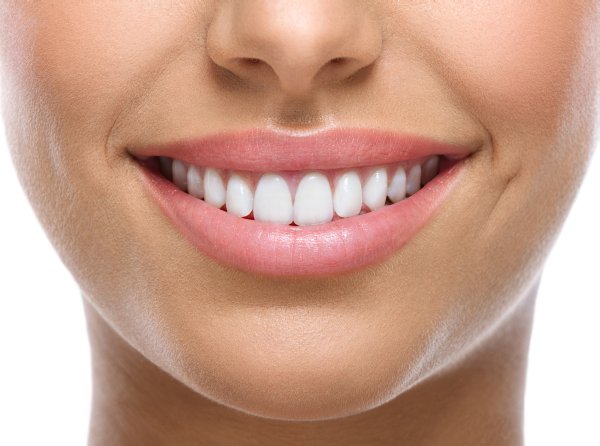Early Orthodontic Treatment Winter Springs, FL
During childhood, orthodontic problems can develop without warning. Fortunately, treatment can help restore your child's smile. Early orthodontics straighten crooked teeth, improve the bite, and fix jaw misalignment.
Phase 1 orthodontics is available at Tuskawilla Family Dentistry in Winter Springs and the surrounding area. Our team provides care to children of all ages. We help families explore their options for cost-conscious orthodontic treatments. Call us at (407) 603-0135 to learn more.
Early Orthodontic Problems and Their Causes
When children still have their baby teeth, they may show signs of needing early orthodontic interventions to correct certain problems. Children with extra teeth or exceptionally crowded teeth may be candidates for early treatment. Teeth that are excessively spaced out may also be a sign that early orthodontics could be beneficial.
Besides the spacing and positioning of the teeth, early orthodontics may also benefit children with bite problems. An underbite, where the lower teeth jut out further from the upper teeth, and a crossbite, where the jaw appears to shift to the side, may be successfully treated with early orthodontics. Genetics is the most common reason why a young child may have a bite problem, but some of these problems may be linked to thumb-sucking, prolonged pacifier use, or bottle use.
“When children still have their baby teeth, they may show signs of needing early orthodontic interventions to correct certain problems.”
Phase 1 of Treatment
During phase 1 treatment, the orthodontist may use a variety of dental appliances to help align the patient's teeth. Phase 1 treatment usually occurs when the child still has their baby teeth. There are also some early orthodontics treatments that use braces during phase 1.
The orthodontist may use space maintainers or spacers to help space out crowded teeth. Expanders are also used during some phase 1 treatment plans to help gently expand the palate. Phase 1 treatment may also consist of appliances such as headgear, retainers, and braces to guide the jawbone and permanent teeth growth into a better position.
“Phase 1 treatment may also consist of appliances such as headgear, retainers, and braces to guide the jawbone and permanent teeth growth into a better position.”
Treatment Timeline
According to the American Association of Orthodontists, children should see an orthodontist by age 7. Phase 1 orthodontics typically begins around age 6 and up to age 9. This treatment phase may last between nine and 18 months, depending on the severity and specifics of the child's bite or teeth alignment problems.
“This treatment phase may last between nine and 18 months, depending on the severity and specifics of the child’s bite or teeth alignment problems.”
Check out what others are saying about our dental services on Yelp: Early Orthodontic Treatment in Winter Springs, FL
Transitioning to Phase 2
Phase 2 may begin around age 10-11. During this stage of treatment, the team may recommend braces. Most children can expect to wear their braces for about two years. In some cases, treatment time may be longer or shorter. Keep in mind that each patient has unique dental needs. Some children might need to wear their braces for up to four years. The dental team can provide more information about each child's treatment timeline.
Not all children need phase 2 treatment. Sometimes, early orthodontic treatments can eliminate the need for braces. The dental team tracks each patient's progress during phase 1, and they can help families decide whether to proceed with phase 2.
“Sometimes, early orthodontic treatments can eliminate the need for braces.”
Questions Answered on This Page
Q. What causes early orthodontic problems?
Q. What happens during phase 1 of treatment?
Q. What are the phases of treatment?
Q. What can I expect from phase 2 treatment?
Q. When should I seek care for childhood dental problems?
People Also Ask
Q. What are the differences between Invisalign and traditional braces?
Q. Can sealants protect against cavity-forming bacteria?
Q. What makes a kid friendly dentist unique?
When to Seek Care for Early Orthodontic Problems
Parents should seek an evaluation right away if their child develops dental problems. The sooner the child receives treatment, the better. Early orthodontic care can shorten treatment times and improve a child's oral health. Delaying treatment could result in long-lasting dental problems.
Preventive care is an important part of any orthodontic plan. Parents should make sure to keep up with exams and cleanings, and reach out for help if their child develops tooth pain. The dental team can offer guidance, support, and intervention.
“Early orthodontic care can shorten treatment times and improve your child’s oral health.”
Frequently Asked Questions About Early Orthodontic Treatment
Q. What is phase 1 orthodontics?
A. Phase 1 orthodontic treatment usually takes place between ages six and nine. During phase 1 care, the dental team looks for developing problems. They check your child's bite and jaw alignment. The team also takes steps to improve the alignment of adult teeth. Phase 1 usually involves retainers, palate expanders, and space maintainers.
Q. Does my child need phase 1 care?
A. All children should receive an orthodontic evaluation by age seven. During the assessment, the dental team performs a full exam. The team can let you know whether your child would benefit from early orthodontics.
Q. How can I find out if my child needs braces?
A. During the initial evaluation, the team may be able to determine whether your child needs braces. But in some cases, the team may delay their recommendations until phase 1 orthodontics is complete. Sometimes, teeth can shift during childhood and change treatment outcomes. Phase 1 treatment may also reduce or eliminate the need for braces.
Q. How long does orthodontic treatment last?
A. Phase 1 orthodontics usually lasts one to two years. If your child needs phase 2 treatment, their orthodontic treatment may continue. Phase 2 treatment might last for about one to three years. The dental team may also suggest breaks during various stages of treatment. Your dental provider can offer a detailed treatment timeline.
Q. How much does orthodontic treatment cost?
A. Treatment costs may vary depending on insurance coverage. Costs also depend on what type of treatment your child needs and how long your child remains in treatment. Our office team can provide more information about early orthodontics costs and coverage.
Dental Terminology
Call Us To Find Out More
To get your child evaluated for possible early orthodontics treatment, call us today at 407-603-0135. Not every child is a candidate for a two-phased treatment, and only an orthodontist can determine the proper course of action. In Winter Springs we provide complete orthodontic services for all phases of treatment.
Helpful Related Links
- American Dental Association (ADA). Glossary of Dental Clinical Terms. 2025
- American Academy of Cosmetic Dentistry® (AACD). Home Page. 2025
- WebMD. WebMD’s Oral Care Guide. 2025
About our business, license, and website security
- Tuskawilla Family Dentistry was established in 2022.
- We accept the following payment methods: American Express, Cash, Check, Discover, MasterCard, and Visa
- We serve patients from the following counties: Seminole County
- We serve patients from the following cities: Winter Springs, Casselberry, Fern Park, Oviedo, and Altamonte Springs
- FL (License #DN22547). View License Information and Specifics
- National Provider Identifier Database (1831623073). View NPI Registry Information
- Healthgrades. View Background Information and Reviews
- Norton Safe Web. View Details
- Trend Micro Site Safety Center. View Details
Back to top of Early Orthodontic Treatment
